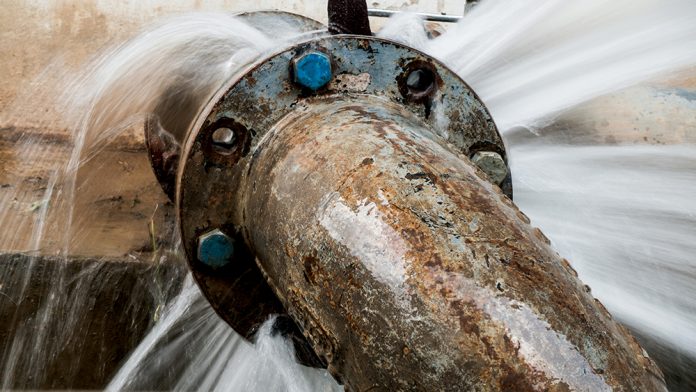Water is assumed to be among the most ‘resilient’ of sectors. Whatever the economic picture, we all need water. Sophisticated engineering design means technical threats can be ‘engineered out’. And the experience of Covid-19 so far appears to back up the assumption. The share prices of the big water firms have held up well; issues like increased demand have had only a minimal effect.
The water industry, however, isn’t an island, and the biggest dangers to the future of the sector lie in these assumptions around resilience: too great a focus on specific engineering threats, organisational silos with their own limited agendas, a lack of resources devoted to resilience. The sector has advanced in terms of risk management processes, but that’s not the same as being genuinely resilient. The complexity of future challenges, some of which are unforeseeable, has been highlighted in the new report from the National Infrastructure Commission, which calls for clear resilience standards for infrastructure operators and stress testing by regulators.
Water supplies are an obvious essential – and, like every other service network, are at the centre of a web of factors (the natural environment, built infrastructure like power and transport, people and their skills) always subject to shocks and unexpected disruption. Water companies might be able to perfect its operations, but the outside world it relies on will always be imperfect. Having resilience is about understanding and recognising the nature of that web in order to be able to recover quickly and successfully from whatever regional or national crisis occurs. All the evidence from the natural world, from the increasing number and frequency of extreme weather events, is that we’re at the beginning of a series of even bigger waves of change, more extreme events and challenges to how we’ve become used to living our lives. Climate change is the towering wave above everything else.
The range of impacts on the industry from the pandemic is only just becoming clear. A dramatic economic recession is going to mean large numbers of customers suddenly unable to pay bills, with implications for immediate cash flow, a responsibility for providing support measures, as well as longer-term issues with customer relations and reputation. Companies have all been affected by unavailability of staff, people self-isolating, in vulnerable groups, going through bereavement, and the effects on psychological wellbeing are expected to be long term. In the context of the imperative need for hygiene, messages from water-saving campaigns such as the national ‘Love Water’ scheme have become obscured.
What’s needed is connected resilience: a helicopter view that takes into account the full picture of the sector’s interdependence and open, honest conversations about what that means in terms of threats. That means not just looking at the plain financial case but keeping in mind all five ‘capitals’, the value of the natural environment, human capital, social capital (institutions and communities), and built capital (everything from our cities to manufactured goods). Financial capital is just the means of transfer between the other four. It’s a principle that’s beginning to be adopted. Yorkshire Water, for example, refers to the importance of the six capitals (adding in intellectual capital).
To make this happen, water companies – like so many other organisations – need to be overcome their siloed thinking, ensuring that the message around connected resilience is shared between operations on one side and those dealing with strategy on the other. Becoming a resilient organisation is cultural, requiring people able to be flexible and adaptable. Solutions to dealing with unexpected events are rarely purely technical, but social. In other words, employees across organisations need to be ‘mindful’, alert to emerging problems and willing and able to act.
There needs to be a willingness to look beyond commercial imperatives. Pandemic has always been on the National Risk Register as a very possible and major threat to the UK, and yet the necessary preparations highlighted in test exercises weren’t implemented by Government because the straight ‘business case’ didn’t stand up. Similarly, water utilities will be constrained by commercial priorities, by shareholders, by their role as part of municipal authorities. There is a lack of a financial buffer to deal with the unexpected, no spare capacity in how assets are being used, meaning a basic fragility. Metrics cover the bare bones of operations without taking into account intangibles like people. Who’s going to be willing to pay for resilience, the customers used to cheap water and under more financial pressure during the economic downturn? The issue is already being tested at Anglian Water. The regulator has forced the company to reduce its costs – but, as Anglian argues in its appeal, this will have an impact on its investment into resilience.
It’s only by setting out the argument in terms of connected resilience – and the events of 2020 – that all the real imperatives around security become clear and urgent. At Cranfield we’re working on opening up conversations across sectors, making use of its expertise across different disciplines and industries – technology, the environment, organisational behaviour – to make connected resilience work in practice. Because most of all, resilience can’t be worked out internally, companies in the water sector need to be outward looking, challenged and engaged.
www.cranfield.ac.uk/centres/centre-for-environmental-and-agricultural-informatics



